20+ SAMPLE Contractor Report
-
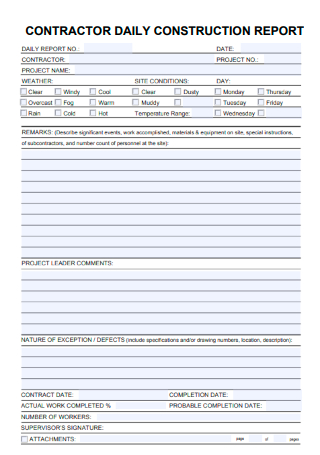
Contractor Daily Construction Report
download now -
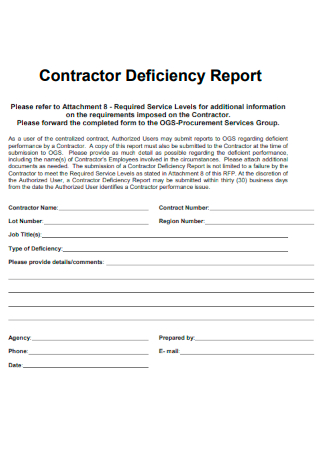
Contractor Deficiency Report
download now -
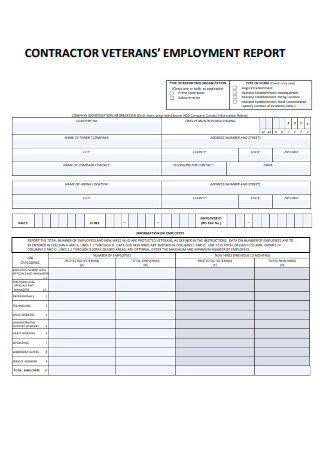
Contractor Veterans Employment Report
download now -
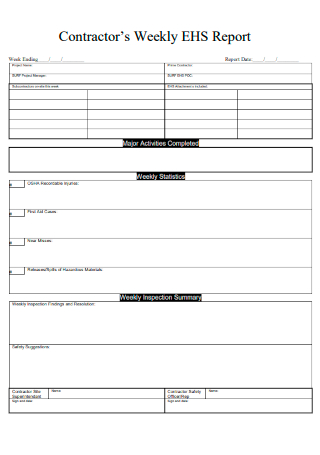
Contractors Weekly EHS Report
download now -
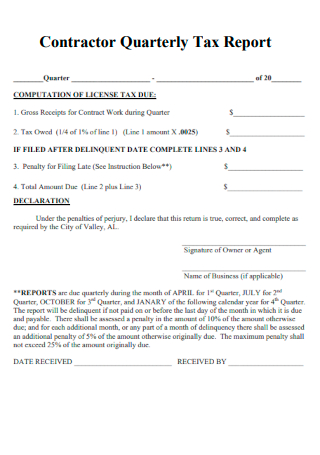
Contractor Quarterly Tax Report
download now -
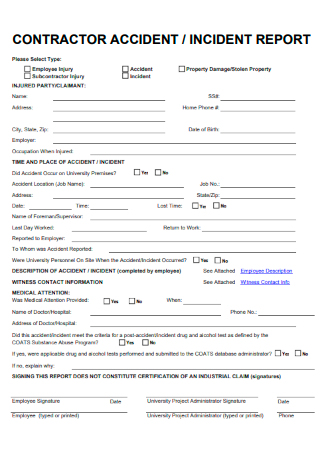
Contractor Accident & Incident Report
download now -
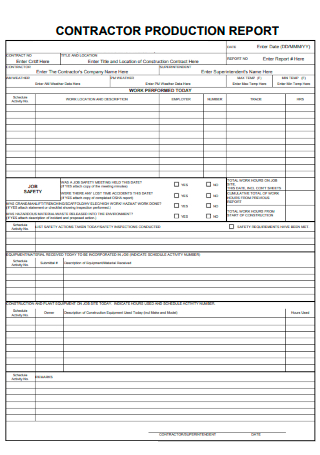
Contractor Production Report
download now -
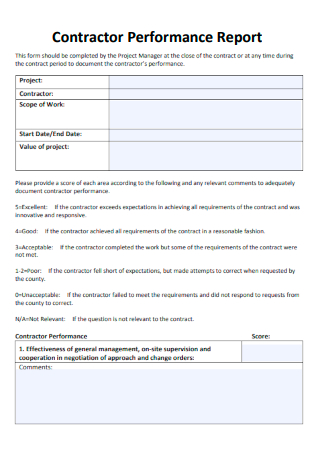
Contractor Performance Report
download now -
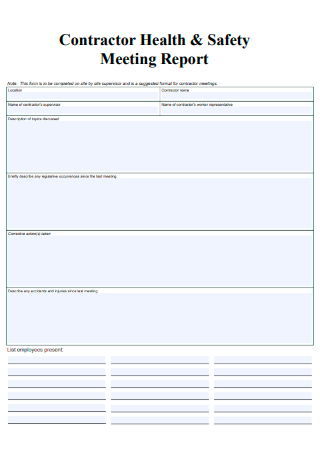
Contractor Health & Safety Meeting Report
download now -
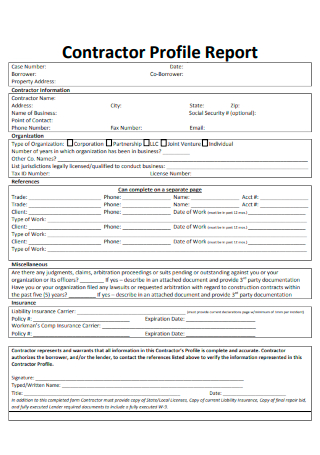
Contractor Profile Report
download now -
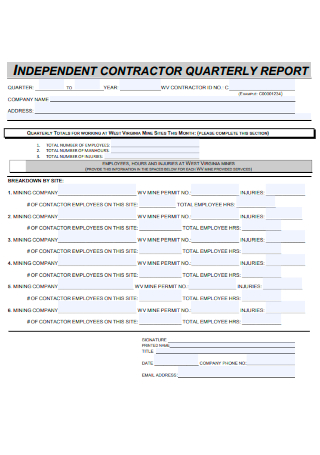
Independent Contractor Quality Report
download now -
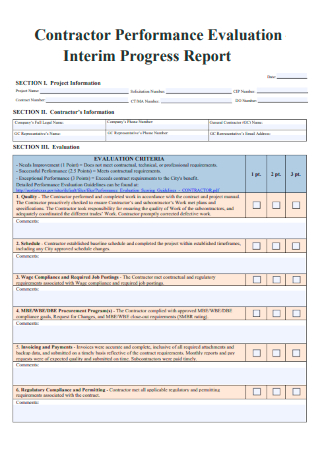
Contractor Performance Evaluation Interim Progress Report
download now -
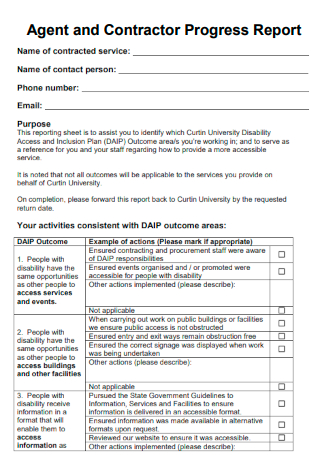
Agent and Contractor Progress Report
download now -
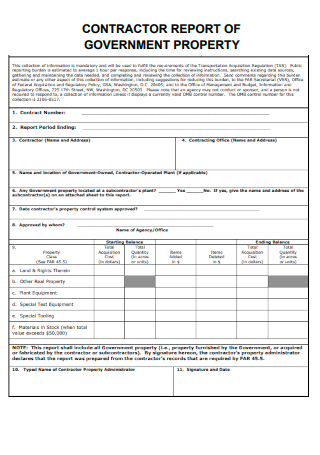
Contractor Report of Government Property
download now -
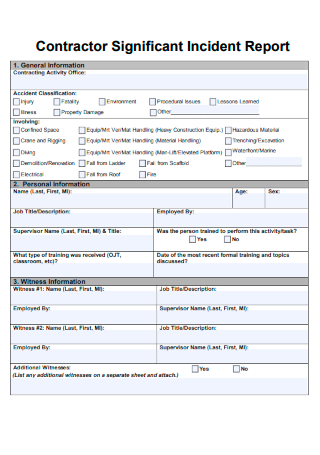
Contractor Significant Incident Report
download now -
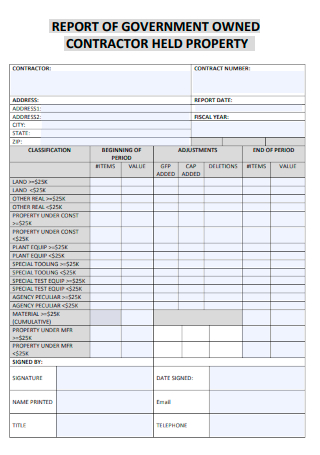
Report of Government Owned Contractor Held Property
download now -
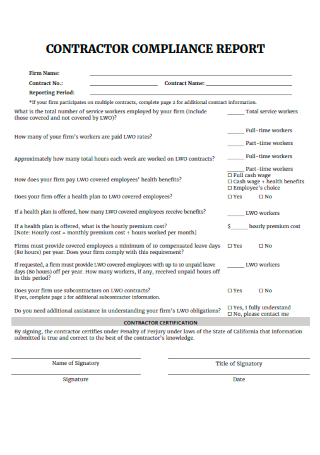
Contractor Compliance Report
download now -
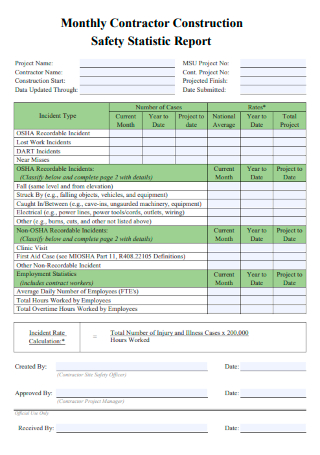
Monthly Contractor Construction Safety Statistic Report
download now -
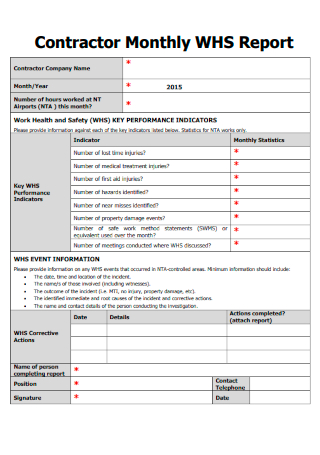
Contractor Monthly WHS Report
download now -
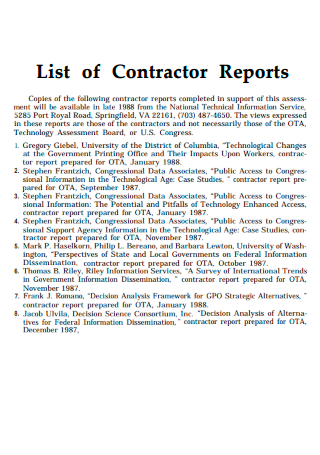
List of Contractor Reports
download now -
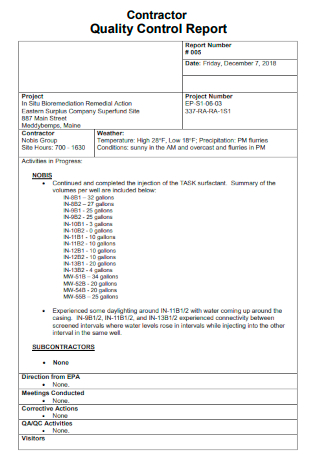
Contractor Quality Control Report
download now
FREE Contractor Report s to Download
20+ SAMPLE Contractor Report
What Is Contractor Report?
Elements of a Contractor Report
Steps in Writing a Contractor Report
FAQs
What is a formal report?
What is the purpose of the weekly report?
What exactly is the purpose of the month-to-month report?
When it comes to insurance, what are the types of policies that every contractor should have in place?
When it comes to building projects, what are the characteristics of each and every subcontractor that contribute to its success?
What Is Contractor Report?
Employees’ daily reports provide them with an in-depth picture of their workweek as a whole. If you have covered everything in the previous week, you should present a short overview of what you accomplished or progressed toward in that week, as well as any problems that were encountered, as well as your intentions for the upcoming week. As a result of the information provided by daily reports, employers can allocate jobs and designate goals and next steps for their employees to work on as a result of the information they have received. Employers can also use the information to allocate jobs and designate goals and next steps for their employees to work on as a result of the information they have received. As a result of this approach, they also have a better understanding of how the individual overcame the obstacles that were presented to them at their workplace. Detailed daily reports offer management knowledge about each employee’s strengths and shortcomings, in addition to information about the work or projects that they are most capable of finishing on time. Performance evaluations and reviews enable employees to have an understanding of the overall quality of their work, as well as the extent to which they are contributing to the task at hand, as a result of their participation. It is possible for them to gain a better understanding of their own pacing and make continuous adjustments to it as a result of using this strategy.
If you require another theme, we have a number of others available on our website that you can use at any time. The names of these individuals are as follows: The templates available include a Subcontractor Management Plan, a Shared Services Agreement, a portfolio Management Plan, a subcontractor safety plan, a Subcontractor Statement, a Standard Subcontractor Agreement, a property purchase agreement, an account management plan, a Security Management Plan, and other forms of documentation. The content in this post is not only about templates, but it also provides important information that you should be aware of in order to effectively create your template.
Elements of a Contractor Report
In order to effectively manage your business connection with the subcontractor that you have selected for the job, you must first develop a subcontract management plan for the project. It is possible to put together a strategy for implementing the agreement by following the instructions provided in the form attached below. It is vital that you follow the three recommended methods listed below in order to build an effective subcontractor daily report:
Steps in Writing a Contractor Report
Basic contractor reports are written in simple and professional language, and each component has a specific set of requirements that must be met in order for the report to be considered complete. Sublease statement The provisions should be presented in a comprehensible and succinct manner in order to limit the possibility of future misinterpretation or ambiguity. This is explained in greater detail in the next section. The upshot of this clarity is that all parties that agree to the terms of the subcontractor statement will be legally protected from one another in the future. When creating a subcontractor daily report, the following stages must be completed in the following order, from most important to least important:
Step 1: Define the Scope of the Project
The work that will be completed, as well as the overall scope of the project, are all specified in detail in this portion of the agreement. Client standards, subcontractor responsibilities, and your own expectations as a contractor are just a few of the aspects taken into consideration. Please also examine our daily work plan, which may be found here.
Step 2: Estimate When the Project Will be Completed.
The statement will describe how much more time you will allocate to subcontractors in order for them to perform their responsibilities on time and according to your specifications. A deadline set several weeks ahead of your own ensures that you will have the time to check and evaluate the work completed by your subcontractor before it is deemed complete and finalized. Having confidence that the work will be of high quality brings comfort to both you and the client. You should also take a look at our daily analysis report.
Step 3: Collect Payment and Billing Information
The amount of money that the subcontractor received for the task that they accomplished is explained in detail in this section. It will be determined how much the subcontractor will be compensated based on the scope of the job performed by the company. Extensions, as well as any Longer Payments, should be indicated in the contract if the subcontractor requires additional time to perform all of the tasks that have been assigned to him or her. In addition, you should review our Staffing Plans.
Step 4: Responsibility in the Event of an Accidental Damage Claim.
If you have insurance coverage for errors, omissions, or accidental damage caused by the subcontractor’s employees, it is possible that you will be covered or that you will not be covered. In the event that you have insurance, you must complete this section and supply all of the required information. It is also the insurance provider’s responsibility to explain to the client what his or her insurance responsibilities are in the event this is not the case.
Step 5: Complete and Submit Your Assignment
Specific restrictions and authorizations that apply to the subcontractor’s hiring of additional workers to help them in carrying out their assignment under the terms of this section of the agreement may be stipulated with great clarity in the agreement. In the construction industry, it is common practice to impose restrictions on your contracted subcontractor in order to prevent spreading the line of work’s obligations too widely across the entire project. “Line of work constraints” is what this is referred to as.
Step 6: Guarantees and Warranties.
If you provide assurances to the subcontractor, this section must include any assurances provided to you by the subcontractor as well as any assurances provided to the subcontractor by you. If you do not provide assurances to the subcontractor, this section must include any assurances provided to you by the subcontractor. As a result, you will need to hire subcontractors to execute all or a portion of the work required to effectively complete your client’s project on time and on budget. Most commonly, subcontractor agreements should specify the subcontractor’s obligations, responsibilities, and tasks, in addition to any other terms or conditions that have been agreed upon by both parties prior to the signing of the agreement.
FAQs
What is a formal report?
It’s common to use the word “formal report” to describe a formal report that includes research and statistics to help decision-makers. Some people refer to formal reports as official reports.
What is the purpose of the weekly report?
Project coordinators from various departments can use a weekly progress report to communicate with one another and maintain tabs on their progress. The report can also be used to assess the effectiveness of the management team because it keeps them updated on their progress.
What exactly is the purpose of the month-to-month report?
Managers can use monthly reports to keep track of all work-related actions that have occurred and tasks that are currently being worked on, as well as information about upcoming projects. As a weekly report, it tells the employer how the project is progressing and how much work is being done at the same time.
When it comes to insurance, what are the types of policies that every contractor should have in place?
Workers’ compensation, commercial general liability, vehicle liability, and excess liability coverage are all included in this comprehensive package of insurance coverage.
When it comes to building projects, what are the characteristics of each and every subcontractor that contribute to its success?
Their efforts must be integrated into a well-documented project plan to ensure success. They must also have a clearly defined subcontract, which includes a statement of work, in order to be successful. They must also have a documented team-building process in order to be successful. Finally, the activities of the subcontractors must be incorporated into a written project plan that has been developed in advance.
The company and its employees benefit from receiving a daily report since it keeps them both up to date on what is really going on in the office. Overtime contributions and productivity are included in the report, which provides a thorough overview of each week’s activities. In order to write a near-perfect daily report for your subcontractor, use the templates and recommendations provided above.
